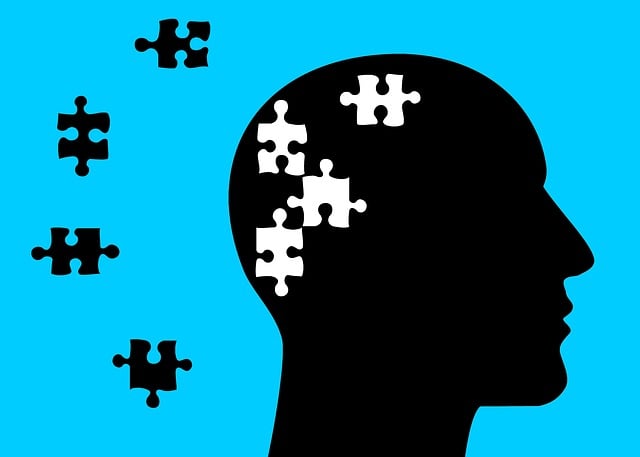Solution-Focused Brief Therapy (SFBT) is a positive and future-oriented approach to mental health psychotherapy that focuses on goal identification and solution implementation. SFBT empowers clients to take control of their mental well-being by setting SMART goals, fostering resilience, and leveraging existing resources. This structured yet flexible process uses techniques like reframing, problem-solving training, and goal-setting exercises for lasting positive changes in a shorter time frame.
Solution-Focused Brief Therapy (SFBT) is a revolutionary approach in mental health psychotherapy, known for its effectiveness in helping clients achieve lasting positive changes. This therapeutic method focuses on solutions rather than problems, empowering individuals to identify and implement their own resources and strengths. SFBT stands out from traditional psychotherapy by emphasizing hope, goal setting, and rapid results. This article explores the core principles, techniques, and outcomes of SFBT, providing insights into this powerful mental health tool.
Understanding Solution-Focused Brief Therapy (SFBT)

Solution-Focused Brief Therapy (SFBT) is a powerful and effective approach within the realm of mental health psychotherapy. This therapeutic method centres around helping individuals identify and implement solutions to their current challenges rather than solely focusing on past issues or symptoms. SFBT believes that people have the innate capability to create positive change in their lives, and its role is to facilitate this process by providing a structured yet flexible framework.
The core concept of SFBT involves setting specific, measurable goals and working collaboratively with clients to achieve these objectives. Therapists utilise a range of techniques, such as reframing, problem-solving skills training, and goal-setting exercises, to empower individuals to take control of their mental well-being. By fostering hope and a positive outlook, SFBT enables clients to make meaningful progress in a relatively short time frame, making it an attractive option for those seeking efficient mental health support.
Key Principles and Philosophy Behind SFBT

Solution-focused brief therapy (SFBT) is grounded in a positive and future-oriented philosophy, focusing on empowering individuals to create solutions for their present challenges rather than merely addressing symptoms. This approach prioritizes hope and optimism, encouraging clients to envision and actively work towards desired outcomes in their lives. SFBT posits that people have the inherent capacity for growth and change, and the therapist’s role is to facilitate this process by helping them identify and implement effective strategies.
The key principles of SFBT include collaboration, goal setting, and a structured yet flexible approach. Therapists work closely with clients, fostering a strong partnership where the individual takes an active role in defining their problems and aspirations. This collaborative process involves exploring the client’s desired future state, identifying the gaps between current reality and that future vision, and then co-creating actionable steps to bridge these gaps. By focusing on solutions rather than problems, SFBT aims to enhance mental health and well-being through practical, hope-fostering strategies tailored to each client’s unique needs.
How SFBT Differentiates from Traditional Psychotherapy

Solution-focused brief therapy (SFBT) stands out from traditional psychotherapy by emphasizing a future-oriented approach, focusing on solving problems rather than merely exploring past experiences. While conventional therapy often delves into the history of a client’s mental health issues, SFBT encourages individuals to set goals and take proactive steps towards positive change. This therapeutic framework believes that people possess the inherent resources and skills to overcome challenges.
In contrast, traditional psychotherapy tends to be more exploratory, aiming to uncover underlying causes of distress. It may involve extensive discussions about past events and feelings. In contrast, SFBT keeps the process concise, focusing on present-day problems and future aspirations. The goal is to empower clients with practical tools and strategies to achieve lasting well-being in a shorter time frame.
Identifying Goals and Solutions in Client Sessions

In solution-focused brief therapy (SFBT), identifying goals and solutions is a central tenet that distinguishes this approach from traditional talk therapy. During client sessions, therapists encourage individuals to focus on what they want in their lives rather than dwelling on problems. This shift in perspective empowers clients by helping them recognize their inherent capacity for change and growth. By exploring specific, measurable, achievable, relevant, and time-bound (SMART) goals, therapists guide clients in developing actionable plans tailored to their unique circumstances.
Through open dialogue and collaborative problem-solving, SFBT facilitates the discovery of existing resources and strengths within the client. This process involves delving into past experiences, identifying current challenges, and generating innovative solutions. Therapists play a facilitative role, providing support, encouragement, and feedback while helping clients gain clarity on their desired outcomes. Ultimately, this goal-oriented approach in mental health psychotherapy equips individuals with the tools and confidence needed to make lasting positive changes in their lives.
Techniques Used in Solution-Focused Psychotherapy

Solution-focused brief therapy (SFBT) employs a range of powerful techniques to help individuals achieve positive change in their mental health and overall well-being. The core approach focuses on identifying and strengthening clients’ resources, goals, and abilities to solve their problems. Therapists facilitate this process by actively listening, asking reflective questions, and collaboratively exploring alternative futures with the client.
One key technique is the “miracle question,” which encourages clients to envision and describe their desired outcomes as if they have already been achieved. This practice helps shift their perspective and increases motivation. Another effective method involves setting SMART (Specific, Measurable, Achievable, Relevant, Time-bound) goals, allowing individuals to take ownership of their healing journey by setting realistic milestones. Through these strategies, SFBT empowers clients to take action, foster resilience, and create lasting positive change in their mental health psychotherapy journey.
Measuring Success and Outcomes of SFBT

Measuring success in Solution-Focused Brief Therapy (SFBT) involves assessing outcomes that are meaningful and relevant to clients’ lives. Unlike traditional psychotherapies, SFBT focuses on identifying and strengthening positive resources and solutions rather than merely diagnosing and pathologizing problems. Therefore, success is not solely defined by symptom reduction but by the client’s ability to achieve their personal goals and live a fulfilling life. Therapists use various tools and techniques to monitor progress, such as structured interviews, goal attainment scaling, and client self-reports, which help quantify improvements in well-being, functioning, and hope.
In mental health psychotherapy, evaluating outcomes is crucial for ensuring the effectiveness of treatment. SFBT’s data-driven approach allows therapists to make informed decisions about the direction and pace of therapy. By regularly measuring success based on clients’ subjective experiences and objective improvements, therapists can tailor interventions to meet their unique needs. This client-centered focus enhances engagement and fosters a collaborative therapeutic alliance, ultimately leading to more positive and lasting outcomes in mental health psychotherapy.
